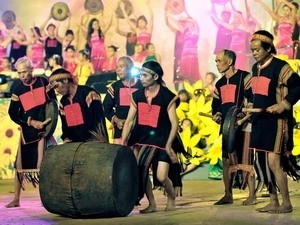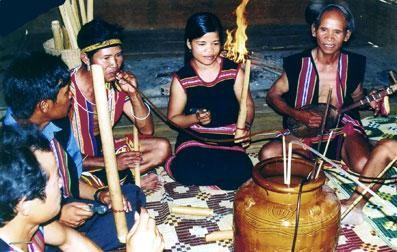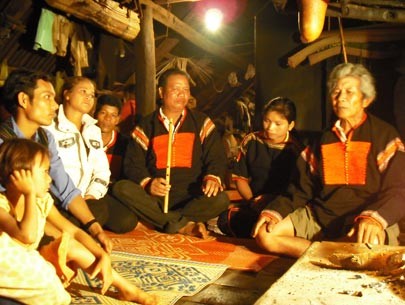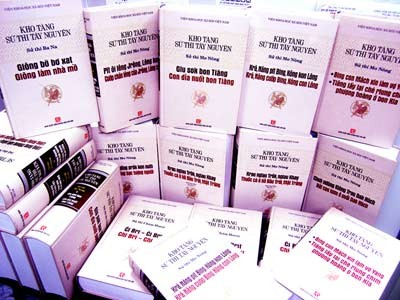(VOVworld) - Vietnam’s Central Highlands region is home to magnificent forests and several ethnic minority groups including M’Nong, Ede, Bana and Jarai. This is a mysterious and rich cultural land, which is famous not only for Gong culture, buffalo stapling, and rice wine nights, but also epic poems, which have been handed down from generation to generation.
 |
| (Photo: Internet) |
In human history, many famous epics have been recorded- the Iliad and the Odyssey of Greece, for example, or the Mahabrahata and the Ramayana of India. These masterpieces are in verse form. 70 years ago, French scholars collected and published Dam San epic of the Ede ethnic minority group in Vietnam’s central highlands. Since then, epic poems of the Bana, Gia Rai, and M’Nong ethnic groups have also been collected. The Central Highlands epics reflect the history of social development of the different ethnic groups in the region. The epics depict the formation of the sun and the earth and human beings and the origin of the traditional customs and culture of these ethnic minority groups. The epics include “Dam San”, and “Khinh Du” of the Ede, “Dam Noi”, “Xing Chion”, and “Xing Cho Nhiep” of the Bana, and “Bon Tieng crop”, the “Legend Pole”, of the M Nong. The epics of the Central Highlands often praise heroes and their feats of arms and their efforts to protect people from harm. The recital of these epic poems affirms the cultural identity of the ethnic groups.
 |
| (Photo: Internet) |
The epic poems are often recited at festivals and other special occasions. By the fire, local artists recite the poems to tell stories about the past, and the activities of daily life. The venue must be kept solemn and the listeners must be quiet.
Central Highlands epics are oral in form and have folklore origins. Some of them can be told in a few hours but others require about 5 days to tell, depending on the teller’s imagination and spirit. The melody of the epics is spontaneous matching the story’s content. The epic tellers are considered artists, simultaneously acting as author, story-teller, director and actor and even commentator. The epics can be romantic stories about love with beautiful words and images reflecting the marriage customs of the past as well as traditional culinary and dressing cultures and music. Epic collector Y Won elaborates on the Dam San epic: "This epic tells the story of Dam San and his gentle, hard working wife. The epic praises her beauty and bright complexion admired by all the men in the village."
 |
| (Photo: Internet) |
With hundreds of epic poems collected, Central Highlands epics are an encyclopedia of the cultural and spiritual lives of ethnic minority groups in the region. In an effort to preserve and promote the cultural values of the Central Highlands epics, Vietnam has launched a project to research, collect, translate, and promote Central Highlands Epics. Cultural researchers have spent more than one million USD in the last ten years recording hundreds of epics, opening classes to teach the epics to the younger generation and bringing the epics into the public schools. The sector has also organized festivals and activities to promote the Central Highlands epics. Central Highlands epics will be submitted to UNESCO for recognition alongside Gong culture as a world intangible and oral cultural heritage of mankind.
 |
| (Photo: Internet) |